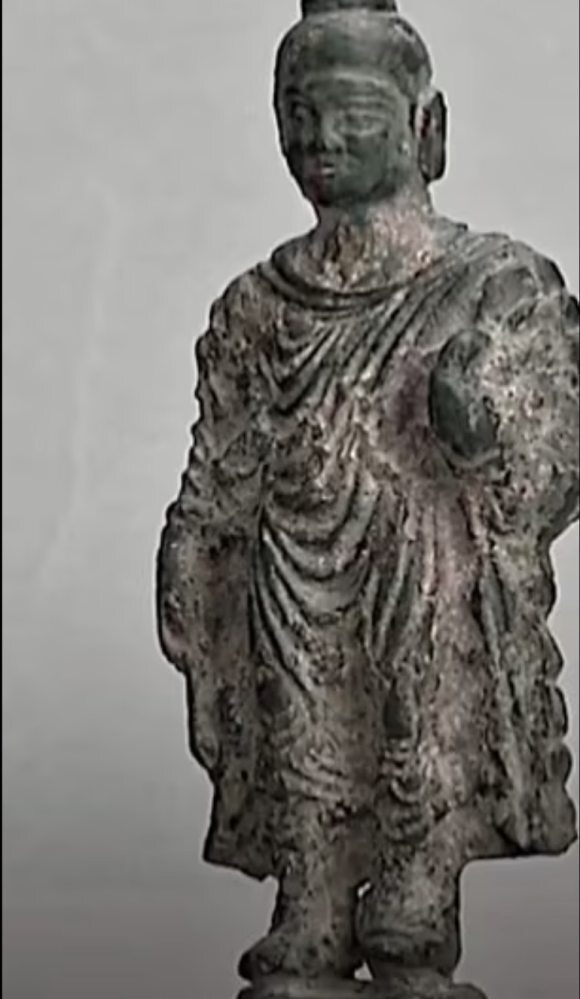
Scientists unearth oldest Buddha statues ever found in China
- The two statues were believed to have been made locally, an important nuance that provides insight into Buddhist history in China
- The oldest ever depiction of the Buddha was found in the 19th century in Afghanistan
Scientists in northwest China’s Shaanxi province revealed last week the discovery of what they believe is the oldest ever Buddha statue found in the country.

In the Chinese discovery, one of the statues depicts the Shakayumi Buddha, which is one of the names used for the man born Siddhartha Gautama after he found enlightenment and became the founding father of Buddhism.
According to Buddhist tradition, the Buddha is believed to have lived sometime between 600BC and 400BC.
The statue is 10.5cm tall and 4.7cm in diameter at the base, making it about the size that could be placed next to a bed, taken on a trip or placed on a shrine.
The relics were made out of an alloy mixture of copper, tin and lead. Though ancient, they were reminiscent in the style and shape of the statues people can buy today. This is called the Gandhara style and refers to relatively realistic depictions of the Buddha.
The other statue is slightly bigger (15.8cm tall and 6.4cm at the base) and depicts the Five Tathāgatas. Named Akshobhya, Ratnasambhava, Vairocana, Amitābha and Amoghasiddhi, the Tathāgatas symbolise the five core wisdoms of Buddhism.
The scientists believe the statues were produced locally because of metal analysis results, an important nuance that suggests Buddhism had already taken hold in the region during the Eastern Han dynasty.

Li Ming, a researcher at the Shaanxi Provincial Institute of Archaeology who led the dig, said at a Shaanxi government press conference that the tombs belonged to members of the royal families and high-ranking officials. Only the emperor’s mausoleum would contain tombs housing more powerful people.
“The owner of the graveyard was possibly a county official or landlord, who had certain family and economic might,” said Li in a quote in state-run newswire Xinhua.
“The findings of the Buddha statues are of great significance to the study of the introduction of Buddhist culture to China and its localisation in the country.”

The excavation started in June 2020, is still ongoing, and scientists have so far found 16,000 artefacts at the site.
The project covers a huge chunk of Chinese history, and so far has excavated 3,648 tombs that were built between the Warring States period to the Qing dynasty, a timeline that covered 475BC to 1912.

